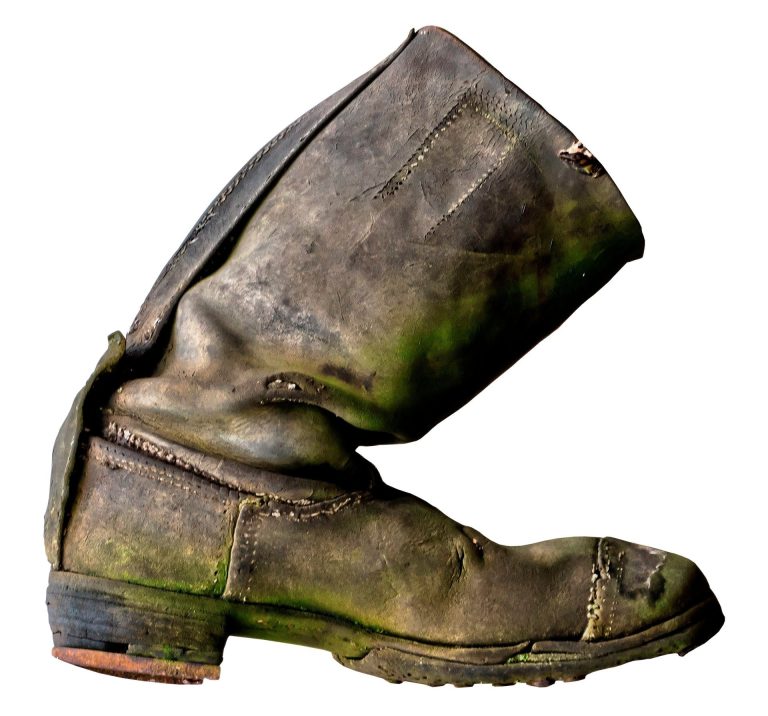Are your favorite pair of shoes suffering from dry rot? Don’t worry, we’ve got you covered! In this article, we’ll provide you with a simple yet effective solution on how to fix dry rot shoes. No need to spend a fortune on new footwear or let your beloved shoes go to waste. With our easy-to-follow steps, you’ll be able to revive your shoes and have them looking and feeling like new again. So, let’s dive right in and learn how to fix dry rot shoes so you can continue rocking your favorite kicks in no time!
How to Fix Dry Rot Shoes: A Comprehensive Guide
Shoes are an essential part of our daily lives, providing comfort, protection, and style. However, one common problem that many people encounter is dry rot. Dry rot can turn your beloved shoes into a crumbling mess, leaving you with a pair that is no longer wearable. But fear not! In this comprehensive guide, we will explore various methods and techniques to fix dry rot shoes and extend their lifespan. Whether you have leather, suede, or canvas shoes, we’ve got you covered. So let’s dive in and revive those dry rot shoes!
Section 1: Identifying Dry Rot
Before we delve into the solutions, it is crucial to identify the signs of dry rot in your shoes. This will help you determine the severity of the problem and choose the appropriate repair method. Look out for the following indicators:
- Visible cracks or flakiness on the shoe’s surface
- Brittle or crumbly texture when touched
- Unpleasant odor, indicating fungal growth
- Discoloration or fading of the material
Identifying dry rot early on can prevent further damage and increase the chances of successful repair.
Section 2: Cleaning and Preparing the Shoes
Before attempting any repairs, it is essential to clean and prepare the shoes properly. Follow these steps:
Step 1: Remove Dirt and Debris
Use a soft brush or cloth to gently remove any dirt or debris from the surface and crevices of the shoes. This step ensures that the repair solutions adhere properly.
Step 2: Wipe with Mild Soap Solution
Prepare a solution of mild soap and water. Dampen a clean cloth with the solution and gently wipe the shoes to remove any stains or grime. Avoid soaking the shoes, especially if they are made of leather.
Step 3: Allow Shoes to Dry Naturally
After cleaning, allow the shoes to air dry thoroughly. Avoid using artificial heat sources, such as a hairdryer, as they can cause further damage.
Section 3: Repairing Dry Rot Shoes
Now that your shoes are clean and prepped, let’s explore different methods to fix dry rot based on the material of your shoes.
Subsection 3.1: Repairing Leather Shoes
Leather shoes are susceptible to dry rot, but with proper care, you can restore them to their former glory. Here’s what you can do:
Step 1: Apply Leather Conditioner
Using a clean cloth or sponge, apply a generous amount of leather conditioner to the affected areas. Gently massage the conditioner into the leather, focusing on the cracks and dry spots. This will help nourish the leather and restore its flexibility.
Step 2: Use Leather Filler
If the dry rot has caused significant damage, you may need to use a leather filler. Apply a small amount of filler to the affected areas and smooth it out with a spatula or your fingers. Follow the instructions provided with the filler for the best results.
Step 3: Apply Leather Dye and Finish
To conceal any discoloration or blemishes caused by the dry rot, consider using a leather dye that matches the original color of your shoes. Apply the dye evenly, following the manufacturer’s instructions. Once the dye has dried, finish off with a leather finish or protective coating to seal the repair.
Subsection 3.2: Repairing Suede Shoes
Suede shoes require special care when treating dry rot. Here’s a step-by-step process to revive them:
Step 1: Brush with a Suede Brush
Using a suede brush, gently brush the surface of the shoes to remove any loose fibers and restore the nap. This helps improve the overall appearance of the shoes.
Step 2: Apply Suede Protector
Spray a suede protector evenly on the shoes to protect them from future damage. The protector creates a barrier against moisture and extends the life of your suede shoes.
Step 3: Use Suede Renovator
If the dry rot has caused discoloration or fading, a suede renovator is your best friend. Apply a small amount of renovator to the affected areas and gently rub it in with a clean cloth. This will help restore the color and make the dry rot less noticeable.
Subsection 3.3: Repairing Canvas Shoes
Canvas shoes are known for their durability, but they are not immune to dry rot. Follow these steps to fix dry rot in your canvas shoes:
Step 1: Create a Baking Soda Paste
Mix baking soda with a small amount of water to create a thick paste. Apply the paste to the affected areas and let it sit for a few hours. Baking soda has natural deodorizing and antifungal properties, which can help combat the effects of dry rot.
Step 2: Scrub with a Soft Brush
Using a soft brush, gently scrub the surface of the shoes to remove the baking soda paste. This will also help dislodge any dirt or debris lodged in the fabric.
Step 3: Apply Fabric Glue
If the dry rot has caused holes or tears in the canvas, you can use fabric glue to mend them. Apply a small amount of fabric glue to the edges of the damaged area and press them together firmly. Allow the glue to dry completely before wearing the shoes.
Section 4: Preventing Dry Rot in Shoes
Now that you’ve learned how to fix dry rot shoes, it’s important to take preventive measures to avoid future occurrences. Here are some tips to help prevent dry rot:
- Store your shoes in a cool, dry place away from direct sunlight and moisture.
- Avoid wearing your shoes in wet or damp conditions, as this can accelerate dry rot.
- Regularly clean and condition your shoes to keep the material supple and less prone to drying out.
- Invest in shoe trees or stuff your shoes with crumpled newspaper to help maintain their shape and absorb moisture.
- Consider using a moisture-absorbing product, such as silica gel packets or activated charcoal, to keep your shoes dry.
- Rotate your shoes regularly to allow them to air out and prevent excessive wear on a single pair.
By following these preventive measures, you can extend the lifespan of your shoes and avoid dealing with dry rot in the future.
Section 5: Conclusion
In conclusion, dry rot shoes don’t have to be a lost cause. With the right techniques and a little bit of patience, you can revive your favorite pair of shoes and continue rocking them for years to come. Remember to identify the signs of dry rot early and take immediate action to prevent further damage. Cleaning, repairing, and taking preventive measures will help you maintain your shoes’ quality and extend their lifespan. So don’t let dry rot discourage you – tackle the problem head-on and enjoy your refreshed and repaired shoes once again!
Note: If you have any additional questions about fixing dry rot shoes, refer to our FAQ section below.
FAQ
Q1: Can I fix dry rot shoes myself?
Absolutely! With the right techniques and materials, you can fix dry rot shoes at home. This guide provides step-by-step instructions for various types of shoes.
Q2: Are there any quick fixes for minor dry rot?
For minor dry rot, you can try using a leather conditioner or suede renovator to restore the shoes. However, it’s important to address the issue as soon as possible to prevent further damage.
Q3: How often should I clean and condition my shoes?
It is recommended to clean and condition your shoes every few months, depending on how frequently you wear them. Regular maintenance will keep them in good condition and prevent dry rot.
Q4: Can I repair dry rot in rubber or plastic shoes?
Dry rot is mainly an issue with organic materials like leather, suede, and canvas. Rubber and plastic shoes are less prone to dry rot. However, if you notice any signs of deterioration, you can try using a rubber or plastic repair kit.
Q5: What if I can’t repair my shoes myself?
If you are unable to repair your shoes yourself, you can take them to a professional shoe repair shop. They have the expertise and tools to fix dry rot and restore your shoes effectively.
Why do my unworn shoes fall apart? (Polyurethane Soles) – Foot Geekz
Frequently Asked Questions
How can I fix dry rot on my shoes?
If you notice dry rot on your shoes, it’s important to take action to prevent further damage. Here’s how you can fix dry rot on your shoes:
Can I repair dry rot on my own?
Yes, you can repair dry rot on your shoes at home. However, it is important to assess the extent of the damage before attempting any repairs.
What materials do I need to fix dry rot on my shoes?
To fix dry rot on your shoes, you will need materials such as shoe glue, sandpaper, shoe polish, shoe conditioner, and a soft cloth.
How do I fix small areas of dry rot on my shoes?
To fix small areas of dry rot, start by gently sanding the affected area to remove any loose fibers. Apply shoe glue to the sanded area and press the damaged part back together. Let it dry completely before polishing and conditioning the shoes.
What should I do if the dry rot on my shoes is extensive?
If the dry rot on your shoes is extensive, it may be best to take them to a professional shoe repair shop. They have the expertise to handle more complex repairs and ensure the longevity of your shoes.
How can I prevent dry rot from occurring on my shoes?
To prevent dry rot, make sure to store your shoes in a cool, dry place and avoid exposing them to extreme heat or moisture. Regularly clean and condition your shoes to keep the leather supple and resistant to dry rot.
Final Thoughts
In conclusion, fixing dry rot shoes can be an easy and cost-effective process when approached with the right techniques. By identifying the signs of dry rot early on and addressing the issue promptly, it is possible to extend the lifespan of your shoes. Through regular cleaning, conditioning, and proper storage, you can prevent dry rot from occurring in the first place. However, if your shoes do develop dry rot, repairing them is still feasible. Using products such as leather conditioner, shoe glue, and patches, you can mend the affected areas and restore your shoes to their former glory. Remember, taking proactive steps to prevent and fix dry rot shoes will save you both money and the frustration of having to replace them frequently.






